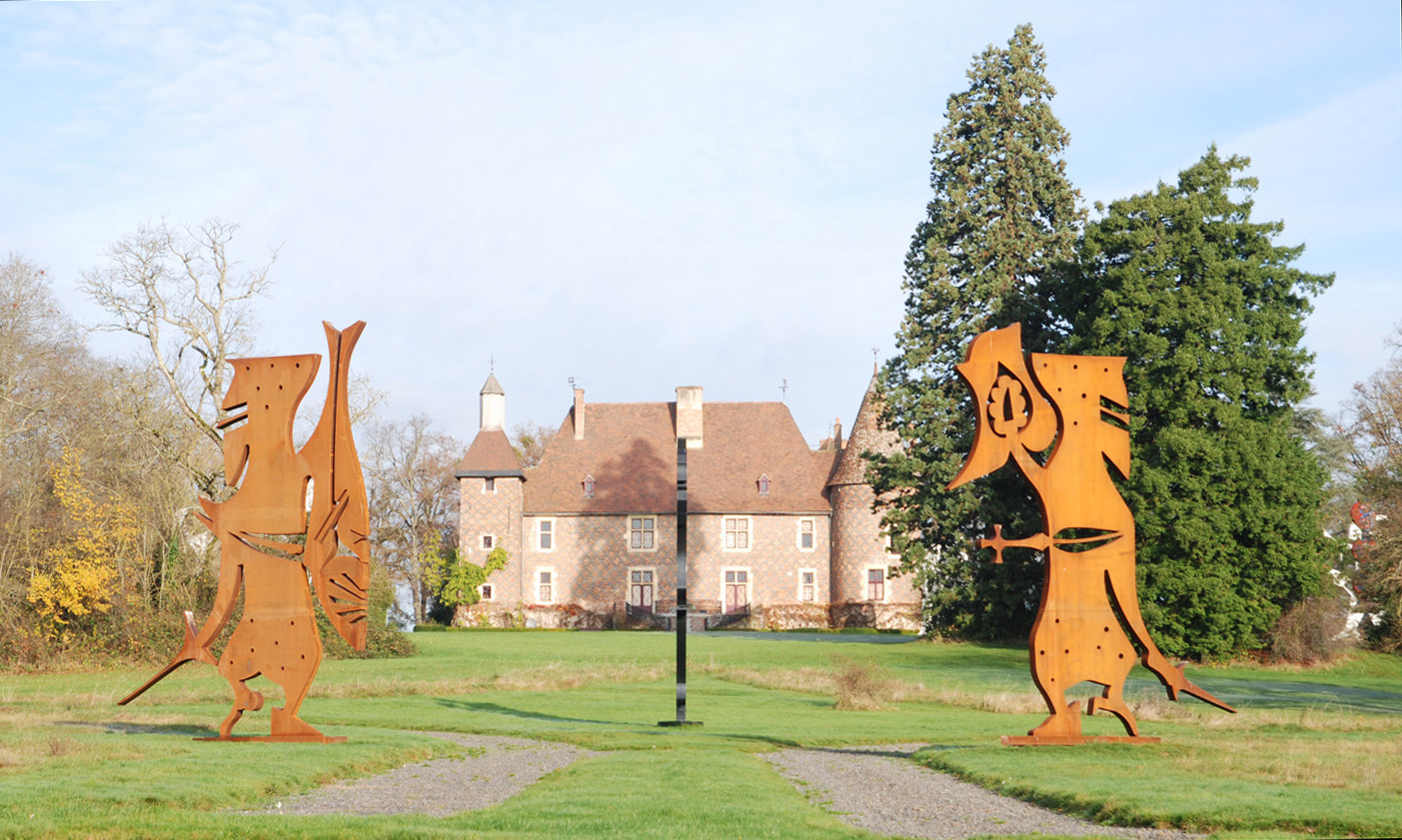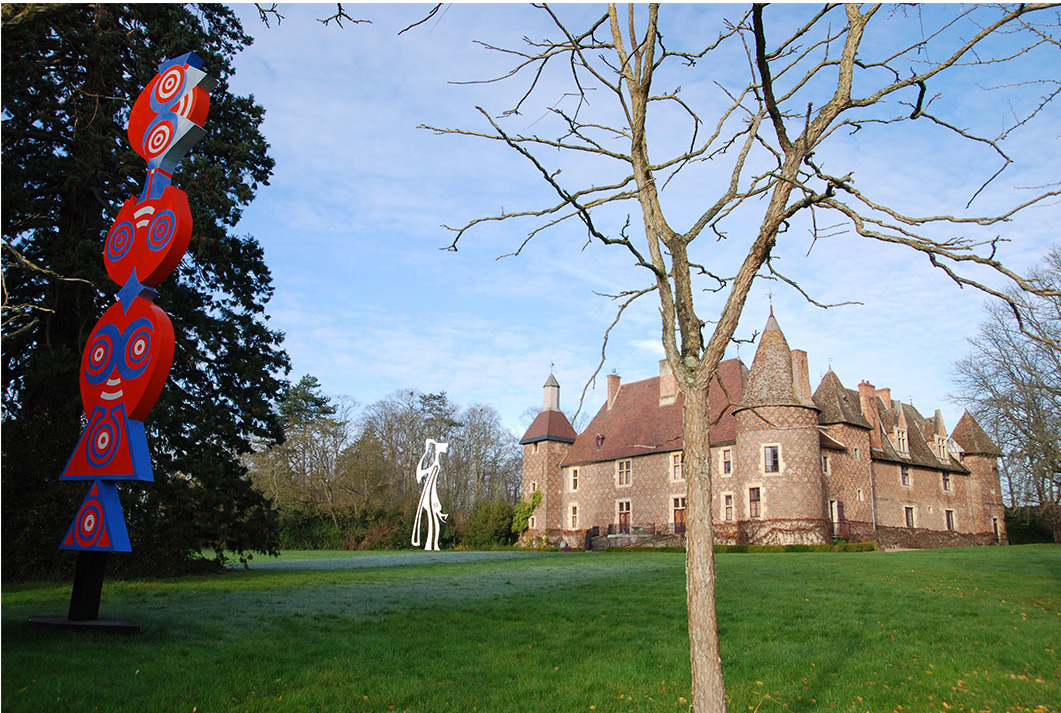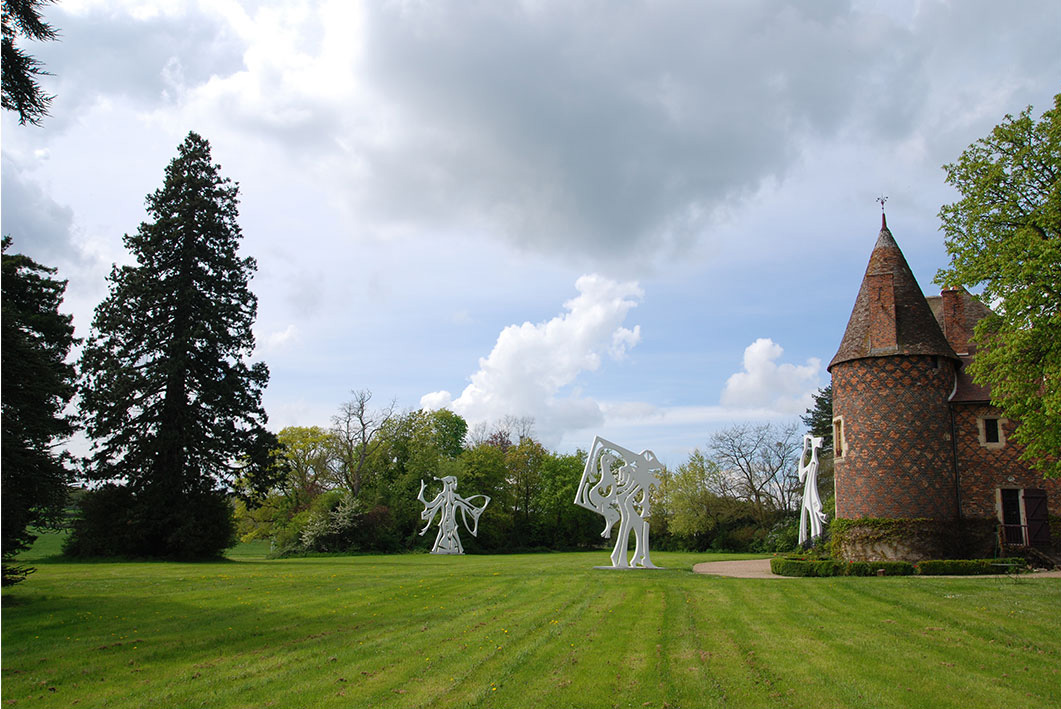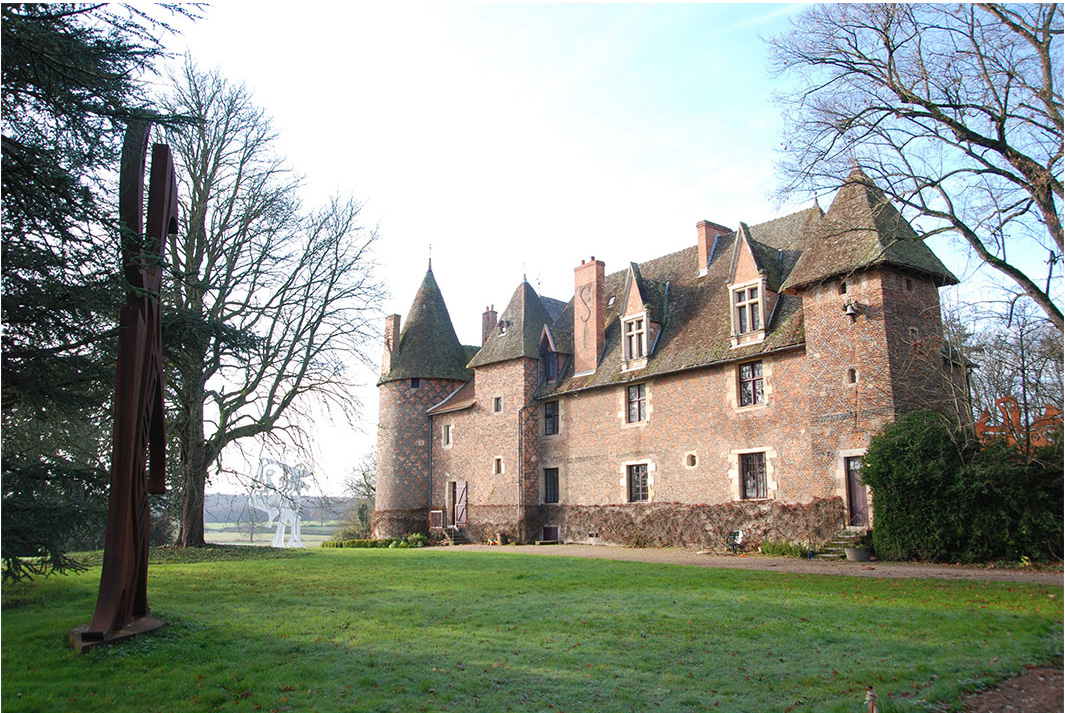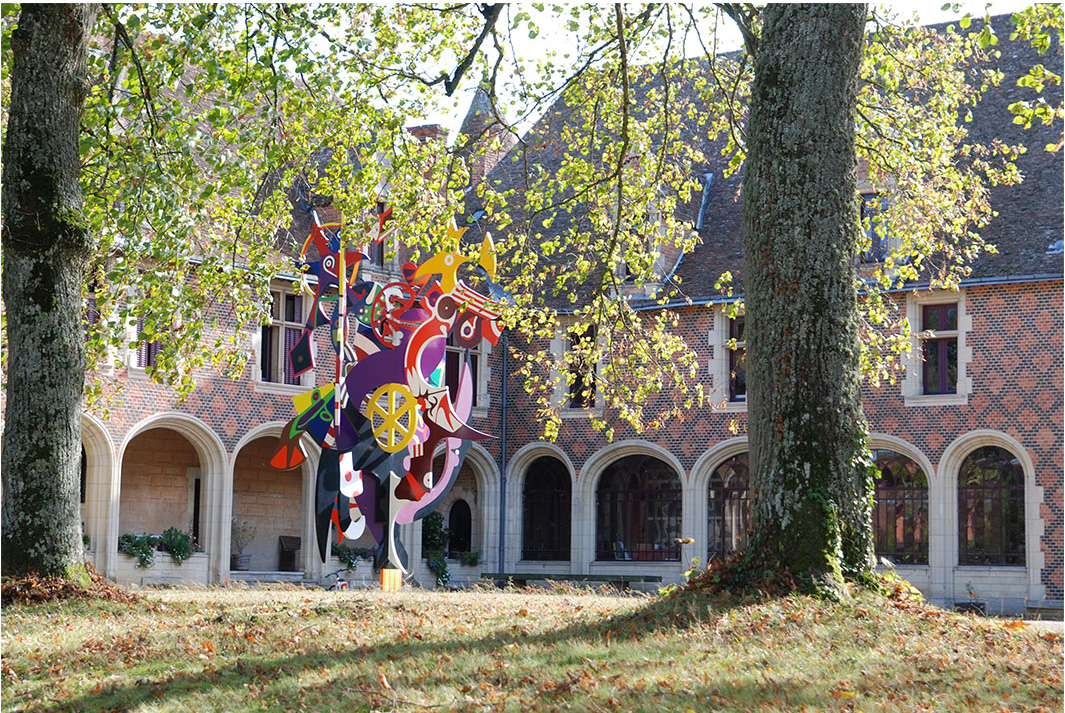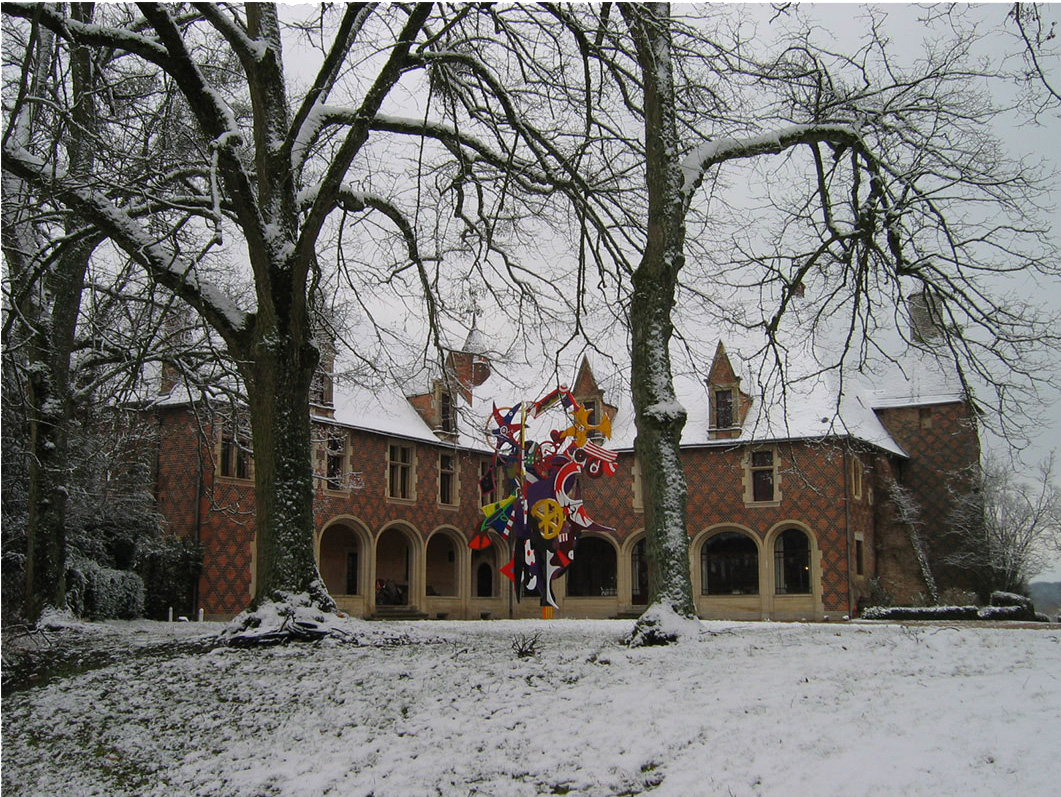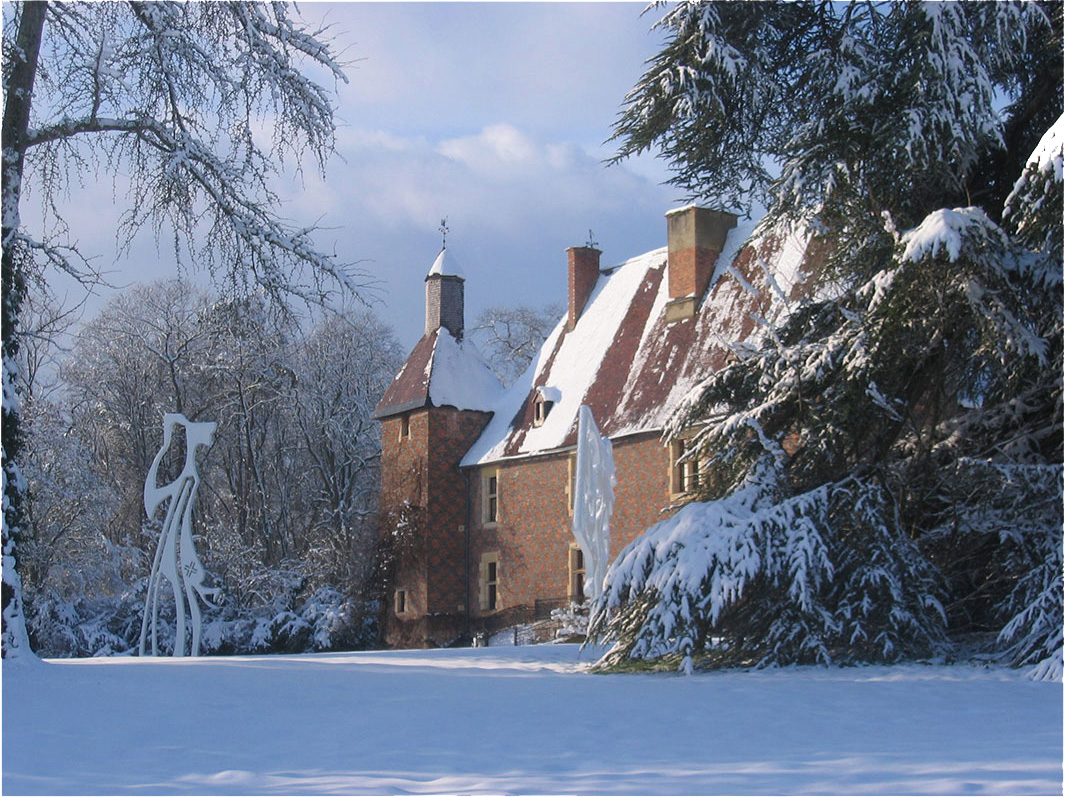CHÂTEAU DES FOUGIS
Historical Overview
‘Tradition holds that in the 15th century, the Fougis estate was a hunting rendezvous for the Bourbons. In 1495, Duke Charles III is seen settling accounts with Hughes Le Long, Lord of Fougis and Grand Provost of the Duke’s Hunting. Prior to this date, the lordship of Fougis is mentioned in 1410 in a census rendered by Pierre Bodet to Guichard Dauphin, Lord of Jaligny. However, the Le Long family had been in possession of Fougis since 1461, when Hugonin Le Long, squire and Grand Provost of the Hunting for Pierre II de Bourbon, held the estate. The Le Long family remained owners of Fougis until 1727, when the fiefdom was bequeathed to a nephew, Jean de Berthier de Bizy. Descendants retained it until the Revolution. It was subsequently purchased in 1802 by Antoine Clayeux, whose family still owns it today.
Although reconstructed at the end of the 16th century (a classical-style gateway is dated 1593), Fougis still features arrow slits that are more decorative than functional. Nicolas de Nicolay describes it in 1569 as a “strong castle, land, and lordship”…
The château is composed of a main rectangular building, flanked by two square towers on its southwest and northeast corners, and a round tower to the southeast. A second perpendicular wing to the north is also flanked by another square tower on its east corner. The walls are made of red and dark brown brickwork, paired to form lozenge patterns. The openings are framed with white limestone. The north façade and some windows to the other sides were modified throughout the end of the 19th century.’
— R. Germain & coll., ‘Châteaux, fiefs en Bourbonnais’, 2004, Éditions De Borée, Sayat, ISBN 2‑84494‑199‑0, pp. 539‑540
Further Reading
A historical account of Les Fougis, with reviewed sources, can be found in the catalogue of the sculpture park, published by Editions Axel Menges, Stuttgart/London: ISBN 978‑3‑932565‑84‑7.
It may be ordered here.
Time Capsule
Until 2011, Erich Engelbrecht, in collaboration with architect João de A. Vares, his son‑in‑law, designed a sculpture park featuring 29 monumental sculptures in steel (raw and polychrome).
The project, executed in stages, surrounded the property acquired in 2001. During that time, part of the family relocated to Château des Fougis to live and work there.
For several years, the artist’s widow and a few other family members have been unable to welcome visitors to Fougis. They now reside in Germany, where they continue to receive art enthusiasts and present works from all periods in the former workshop in Melle, the birthplace of Erich Engelbrecht’s art.
In the main wing of the château, Mrs Waltraud Engelbrecht, the widow and first executor of the artist’s estate, presents a private collection of other works of Erich Engelbrecht, including large-format tapestries, oil paintings, small steel sculptures, and graphics.
This indoor exhibition, accessible only by invitation or prior appointment, will remain closed until further notice due to the circumstances mentioned above.
Ongoing Cultural Activities
This cultural offering is complemented by the annual international music and dance festival ‘Festiv’ Allier’, held every August since 2007 in the ‘Haras des Fougis’.
The annex includes a professional kitchen, a multi-purpose room with mezzanine, and a large marquee for various events.
Mrs Engelbrecht also offers accommodation for exhibition visitors in two nearby buildings.

